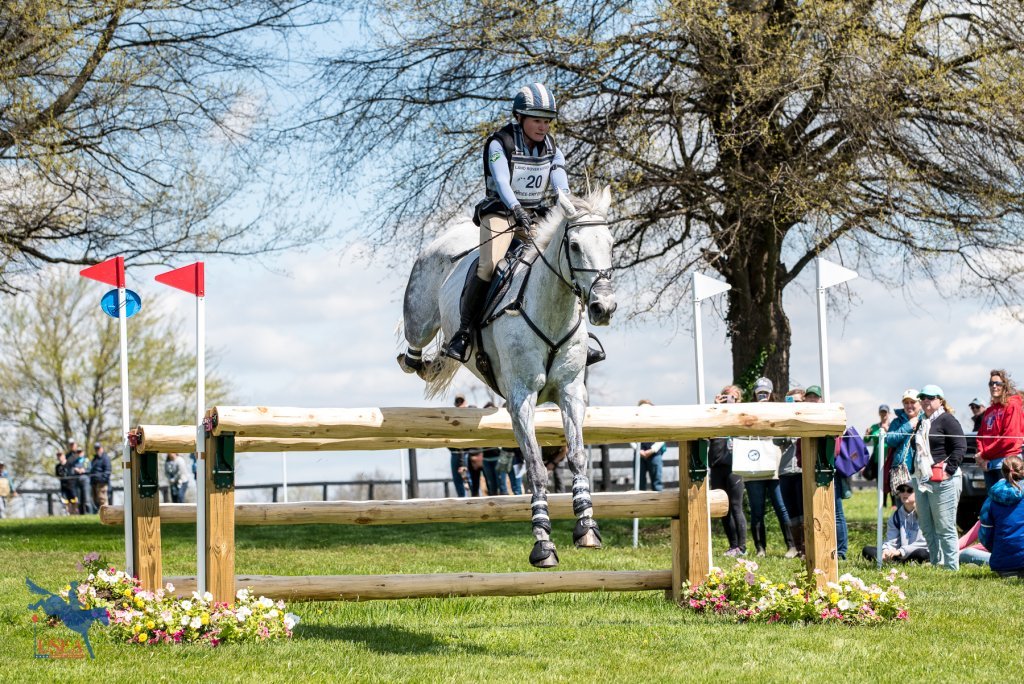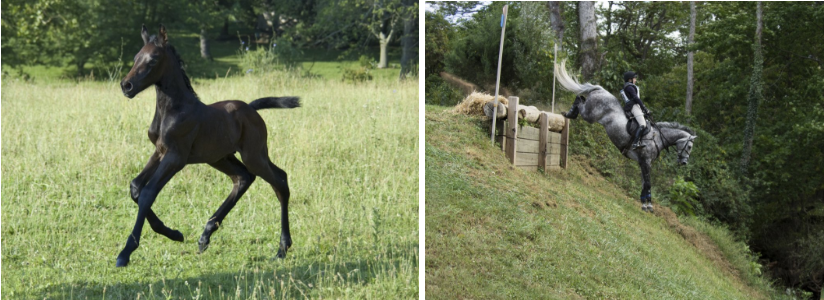Behind the Breeder's Brand: Phyllis Dawson and Windchase, Part II

“The gallop, the jump, and the blood” are three components Phyllis Dawson looks for when she intends to breed an upper level event horse. Dawson has a long list of eventing achievements and one of them includes the success of her breeding program out of her own farm, Windchase. Dawson and her late stallion, Brandenburg’s Windstar, produced numerous top level event horses including Polaris (Brandenburg’s Windstar x North River Lady), Arthur (Brandenburg’s Windstar x Kelly), Polar Storm (Brandenburg’s Windstar x Ashley W), and Windchase Phoenix Star (Brandenburg’s Windstar x North River Lady). This article shares Dawson’s insider tips and is the second feature to go Behind the Breeder’s Brand. Please click here to read the first feature.

In order to evaluate the potential of future event horses, the United States Eventing Association (USEA) launched the Future Event Horse (FEH) program as a precursor to the popular Young Event Horse (YEH) program. Identifying the potential in horses comes second nature for Dawson and the USEA had the opportunity to tap into her wealth of knowledge.
Soundness, sacrifices, and stallions: read on below for Dawson’s advice on how to breed an ideal event horse.
Breeding 101
Q: If you could breed anything in the world, what would you breed?
A: “It would be an Irish Sport Horse that is 3/4 to 7/8 Thoroughbred, with distance runner bloodlines, and the balance would be traditional Irish jumping bloodlines that trace back to classic horses such as King of Diamonds and Sea Crest. Actually, that IS what I am breeding!”
Q: Do you believe stallions live up to their reputations as being aggressive and hard to handle around mares?
A: “It depends on the stallion. Some stallions are difficult and hard to handle, and others are very easy. It is important to never forget a stallion is a stallion, and riding and handling them is generally best done by people with some experience.”
“When I was riding and competing Brandenburg’s Windstar when he was a young horse, he had a great temperament and was easygoing at home, but at the competitions, he became somewhat, shall we say, stimulated? It would take a bit of persuasion to get him to focus on the job at hand.”
Q: Broodmares: how often do you breed one? How many babies do they typically have over their lifetime?
A: “As long as they are in good health and the foaling procedure goes without problems, I will attempt to get each of my broodmares in foal every year. If you start with a youngish mare, they may give you up to a dozen foals in their breeding lifetime – but this would be the exception rather than the norm.”
Q: How did you get into breeding?
A: “I was always fascinated with the concept of breeding and producing my own horses and had dabbled in it breeding a mare or two every few years. After we got the stallion I expanded.”
Q: Do you primarily breed horses solely for eventing?
A: “Yes, that is my intent, to breed for eventing. My goal is to try to produce a young horse with enough quality and talent to go to the upper levels. They won’t all turn out to [be upper level] horses, no matter how good the breeding program, but the others should make good mid-level or Young Riders or amateurs horses.”
Q: What trait do you believe would be worth sacrificing when breeding?
A: “I would sacrifice a big fancy trot before I would sacrifice a good balanced engaged canter – the canter is the gait they jump from!”

Dawson’s Tricks of the Trade
“Don’t breed your hot crazy mare because you think having a foal will settle her down!”
“Never sacrifice soundness or temperament when choosing breeding stock.”
“When breeding an event horse, you are always better off to start with a cross-country horse and then teach him dressage, rather than starting with a dressage horse and trying to teach him cross-country. For an upper level prospect, look for the gallop, the jump, and the blood.”
“I often hear people say, ‘My mare went lame, so I will breed her.’ That can be fine if the source of the lameness is an accident or injury, or if she enjoyed a long successful sporting career before becoming unsound, but if she was just not inherently tough enough to stay sound or had conformation flaws that led to unsoundness, I would not want to breed such a mare.”
“Full warmbloods are great horses, and so are Irish Draught crosses, but in both cases, to produce a top eventer, breed them to a Thoroughbred, not to each other!”
“Soundness is high on my list of attributes when choosing to breed for any level of eventer. Choose horses who have stayed sound in their careers, or are know for producing sound offspring.”
“If you are trying to breed an amateur friendly lower or mid- level horse, you can sacrifice speed, and to a degree jumping scope. But you always want a horse that is capable of jumping at least a level higher than you want to compete, so you have margin for error!”
“One does not enter into the breeding business because of the profit you will make (you won’t). And don’t think it is a less expensive way to get a young horse (it isn’t).”
“If you are in it for the long haul, you will have the bad days along with the good. The foal that is stillborn. The yearling that breaks its leg in the field, or the 2-year-old that dies of colic.”
“You breed because you love horses, love the process, and perhaps have a mare you love and want to get a foal from, or perhaps you want to choose your favorite bloodlines and try to create a superior athlete or a trusted partner.”
After all, “breeding is a journey!”

About the USEA Future Event Horse Program
The USEA introduced the Future Event Horse (FEH) program in 2007 as a pilot program in response to the popularity of the already established USEA Young Event Horse (YEH) program. Where the YEH program assesses 4- and 5-year-old prospective event horses based on their performance, the FEH program evaluates yearlings, 2-year-olds, and 3-year-olds for their potential for the sport based on conformation and type. Horses are presented in hand and divisions are separated by year and gender. At the Championships, 3-year-olds are also required to demonstrate their potential over fences in an additional free-jump division.
New in 2017 was the FEH 4-year-old division, designed for youngsters not quite ready for the rigors of the Young Event Horse program. These horses are presented under saddle at the walk, trot, and canter before being stripped of their tack and evaluated for their conformation. Additionally, 4-year-olds also participate in the free-jump divisions at Championships to show their potential over fences. Click here to learn more about the Future Event Horse Program.
The USEA would like to thank SmartPak, Standlee Hay Company, Professional’s Choice, and Merck Animal Health for sponsoring the Future Event Horse program.














